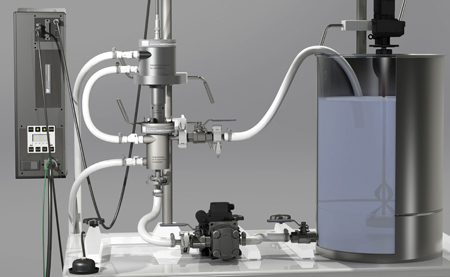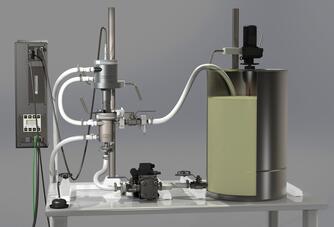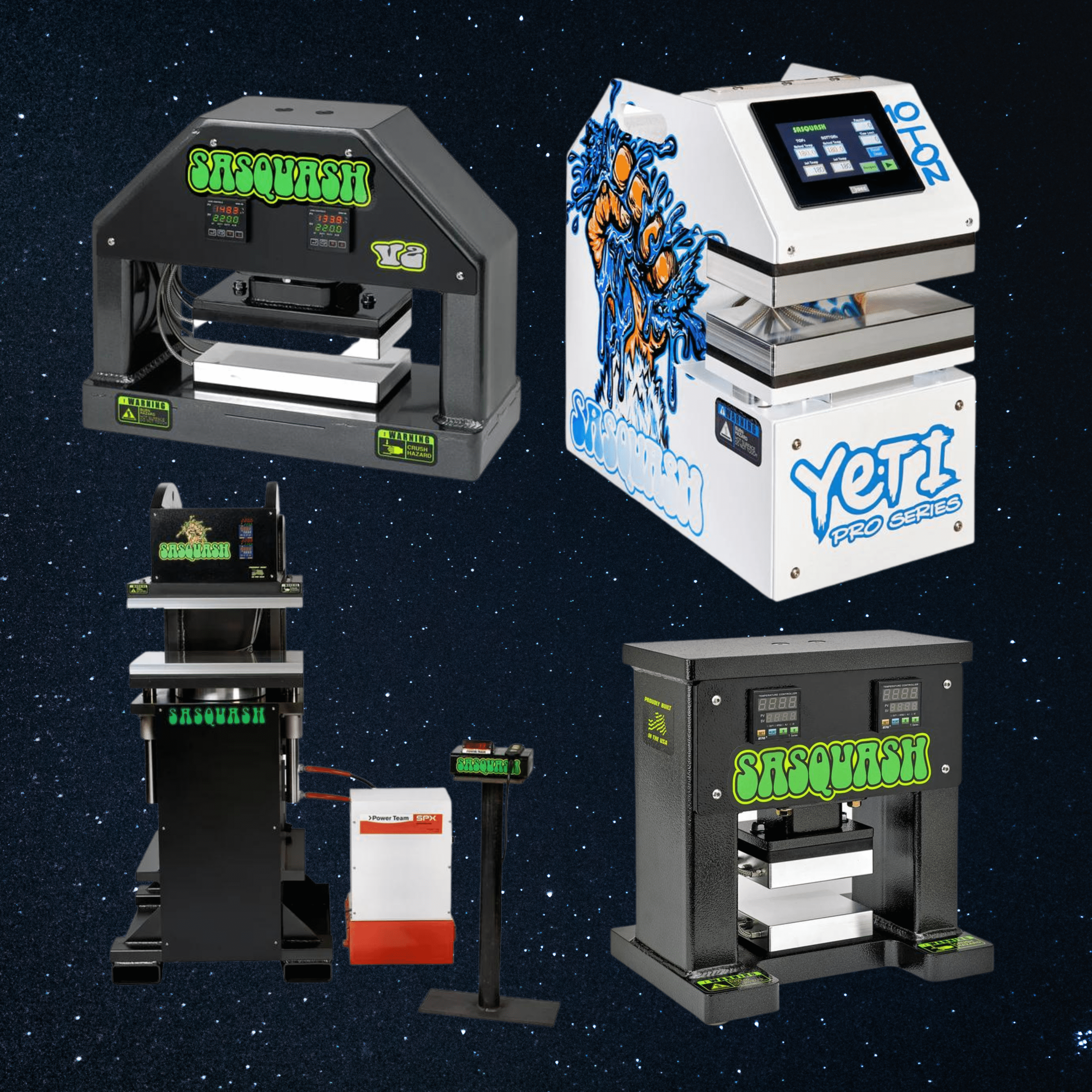I saw this article and thought it looked interesting. Has anyone heard of this or, even better, tried it?
A Leap Forward In Cannabinoid Extraction With Ultrasonic Techniques
Ultrasonic extractors also referred to as ultrasonic emulsifiers, are part of the new wave of extraction science.
Ultrasonic extraction is the next leap forward in cannabinoid extraction techniques. Due to the continually moving goal post of cannabis law, the medicinal cannabis industry is experiencing an explosion of technological advancements. This is especially true when it comes to exploring novel new methods for extracting viable therapeutic compounds like cannabinoids.

Image Courtesy of Industrial Sonomechanics, LLC. BSP-1200 BENCH-SCALE PROCESSOR
Extraction has gone from rudimentary ethanol solvent based procedures, which technically could be done in a garage, to increasingly complex and expensive devices. These new extractors require significant technical know-how and typically require a substantial financial investment, sometimes into the tens of thousands of dollars.
Ultrasonic extractors also referred to as ultrasonic emulsifiers, are part of the new wave of extraction science. This innovative method is substantially less costly than other advanced technologies on the market. This has opened up the playing field for small to medium-sized operations to significantly improve their extraction processes.
Benefits Of Ultrasonic Extraction
Sonication, a term which refers to the use of ultrasonic waves, has become increasingly popular since its release. It comes as no surprise to industry veterans, who know that most commonly practiced extraction techniques come with unavoidable problems. The benefits of sonication easily beat out the competition, and often with much less investment.
Ultrasonic extraction has a number of benefits, for a producer's bottom line as well as the quality of the final product. For one, sonication is a much more environmentally friendly extraction method that does not rely on harsh solvents to extract the cannabinoid. Another main reason for the rise of ultrasonic extraction is that the entire process takes a matter of minutes to complete. Other methods take hours, sometimes days to deliver a final product. Plus, as mentioned earlier, it is much more economical than other mechanisms.
The mechanism is widely adaptable to many different applications, from commercial to industrial, to medicinal products. The ultrasonic extractor can be used with many different solvents. Depending on what the final product requires, an ultrasonic extraction method can work with a variety of substances such as ethanol, CO2, H2O, olive oil, coconut oil, and many others.
Importantly, for producers who care about preserving the integrity and concentration of cannabinoids and terpenes, ultrasonic extractors do not rely on heat. Extraction methods which rely on high heat quickly destroy the sensitive cannabinoid content, which subsequently destroys much of the whole-plant medicinal benefit. Many suppliers advertise the fact that these extraction methods are extremely low thermal and do not require temperatures to go above 60 degrees Celsius.
How Does Ultrasonic Cannabis Extraction Work?
Ultrasonic extraction addresses the extremely problematic fact that cannabinoids, like THC and CBD, are naturally hydroponic. Without harsh solvents, it is often difficult to expel the precious cannabinoids from within the cell interior. To increase the bioavailability of the final product, producers need to find extraction methods that break down the tough cell wall.
The technology behind ultrasonic extraction is anything but easy to understand. In essence, sonication relies on ultrasonic waves. A probe is inserted into a solvent mixture, and the probe then emits a series of high and low-pressure sound waves. This process essentially creates microscopic currents, eddies, and pressurized streams of liquid, forming a particularly harsh environment.
These ultrasonic sound waves, which emit at a speed of up to 20,000 per second, create an environment that breaks through cellular walls. The forces which typically work to hold the cell together are no longer viable within the alternating pressurized atmosphere created by the probe.
Millions upon millions of tiny bubbles are created, which subsequently pop, leading to the complete breakdown of the protective cell wall. As the cell walls break down, the inner materials are released directly into the solvent, thus creating a potent emulsion.
Building Off Ultrasonic Methods
The sonication emulsion process can be combined with many other extraction methods to create even higher concentrations. Unlike other less-advanced processes, the ultrasonic method is remarkably reproducible. All the parameters can be meticulously set, and then easily replicated.
Building off the already high-quality products produced through ultrasonic extraction, producers can combine with other methods to improve the final cannabinoid potency. For example, liposomal technology is often combined with sonication in order to increase the bioavailability of the final product.
Liposomal technology takes substances, like CBD which are naturally hydroponic, and transforms them into water-soluble substances. Liposomes are essentially tiny messengers working within the human body, and by encapsulating cannabinoids within this process, producers can develop a powerful therapeutic agent.
A Leap Forward In Cannabinoid Extraction With Ultrasonic Techniques
Ultrasonic extractors also referred to as ultrasonic emulsifiers, are part of the new wave of extraction science.
Ultrasonic extraction is the next leap forward in cannabinoid extraction techniques. Due to the continually moving goal post of cannabis law, the medicinal cannabis industry is experiencing an explosion of technological advancements. This is especially true when it comes to exploring novel new methods for extracting viable therapeutic compounds like cannabinoids.

Image Courtesy of Industrial Sonomechanics, LLC. BSP-1200 BENCH-SCALE PROCESSOR
Extraction has gone from rudimentary ethanol solvent based procedures, which technically could be done in a garage, to increasingly complex and expensive devices. These new extractors require significant technical know-how and typically require a substantial financial investment, sometimes into the tens of thousands of dollars.
Ultrasonic extractors also referred to as ultrasonic emulsifiers, are part of the new wave of extraction science. This innovative method is substantially less costly than other advanced technologies on the market. This has opened up the playing field for small to medium-sized operations to significantly improve their extraction processes.
Benefits Of Ultrasonic Extraction
Sonication, a term which refers to the use of ultrasonic waves, has become increasingly popular since its release. It comes as no surprise to industry veterans, who know that most commonly practiced extraction techniques come with unavoidable problems. The benefits of sonication easily beat out the competition, and often with much less investment.
Ultrasonic extraction has a number of benefits, for a producer's bottom line as well as the quality of the final product. For one, sonication is a much more environmentally friendly extraction method that does not rely on harsh solvents to extract the cannabinoid. Another main reason for the rise of ultrasonic extraction is that the entire process takes a matter of minutes to complete. Other methods take hours, sometimes days to deliver a final product. Plus, as mentioned earlier, it is much more economical than other mechanisms.
The mechanism is widely adaptable to many different applications, from commercial to industrial, to medicinal products. The ultrasonic extractor can be used with many different solvents. Depending on what the final product requires, an ultrasonic extraction method can work with a variety of substances such as ethanol, CO2, H2O, olive oil, coconut oil, and many others.
Importantly, for producers who care about preserving the integrity and concentration of cannabinoids and terpenes, ultrasonic extractors do not rely on heat. Extraction methods which rely on high heat quickly destroy the sensitive cannabinoid content, which subsequently destroys much of the whole-plant medicinal benefit. Many suppliers advertise the fact that these extraction methods are extremely low thermal and do not require temperatures to go above 60 degrees Celsius.
How Does Ultrasonic Cannabis Extraction Work?
Ultrasonic extraction addresses the extremely problematic fact that cannabinoids, like THC and CBD, are naturally hydroponic. Without harsh solvents, it is often difficult to expel the precious cannabinoids from within the cell interior. To increase the bioavailability of the final product, producers need to find extraction methods that break down the tough cell wall.
The technology behind ultrasonic extraction is anything but easy to understand. In essence, sonication relies on ultrasonic waves. A probe is inserted into a solvent mixture, and the probe then emits a series of high and low-pressure sound waves. This process essentially creates microscopic currents, eddies, and pressurized streams of liquid, forming a particularly harsh environment.
These ultrasonic sound waves, which emit at a speed of up to 20,000 per second, create an environment that breaks through cellular walls. The forces which typically work to hold the cell together are no longer viable within the alternating pressurized atmosphere created by the probe.
Millions upon millions of tiny bubbles are created, which subsequently pop, leading to the complete breakdown of the protective cell wall. As the cell walls break down, the inner materials are released directly into the solvent, thus creating a potent emulsion.
Building Off Ultrasonic Methods
The sonication emulsion process can be combined with many other extraction methods to create even higher concentrations. Unlike other less-advanced processes, the ultrasonic method is remarkably reproducible. All the parameters can be meticulously set, and then easily replicated.
Building off the already high-quality products produced through ultrasonic extraction, producers can combine with other methods to improve the final cannabinoid potency. For example, liposomal technology is often combined with sonication in order to increase the bioavailability of the final product.
Liposomal technology takes substances, like CBD which are naturally hydroponic, and transforms them into water-soluble substances. Liposomes are essentially tiny messengers working within the human body, and by encapsulating cannabinoids within this process, producers can develop a powerful therapeutic agent.












